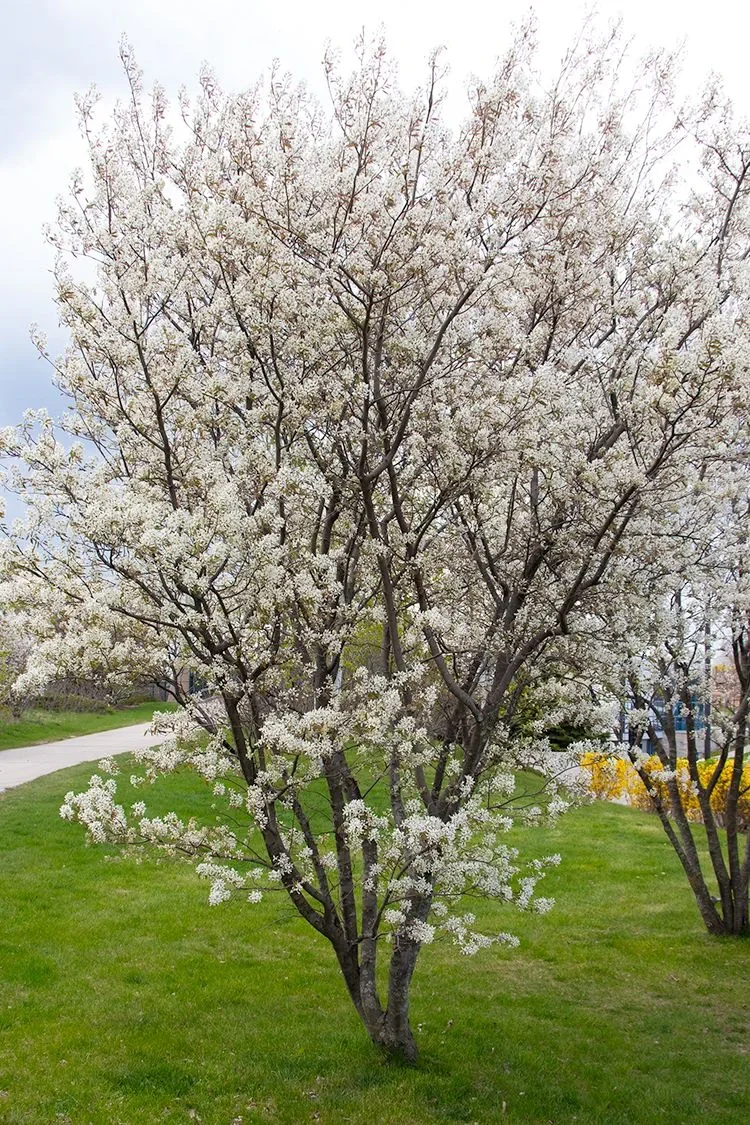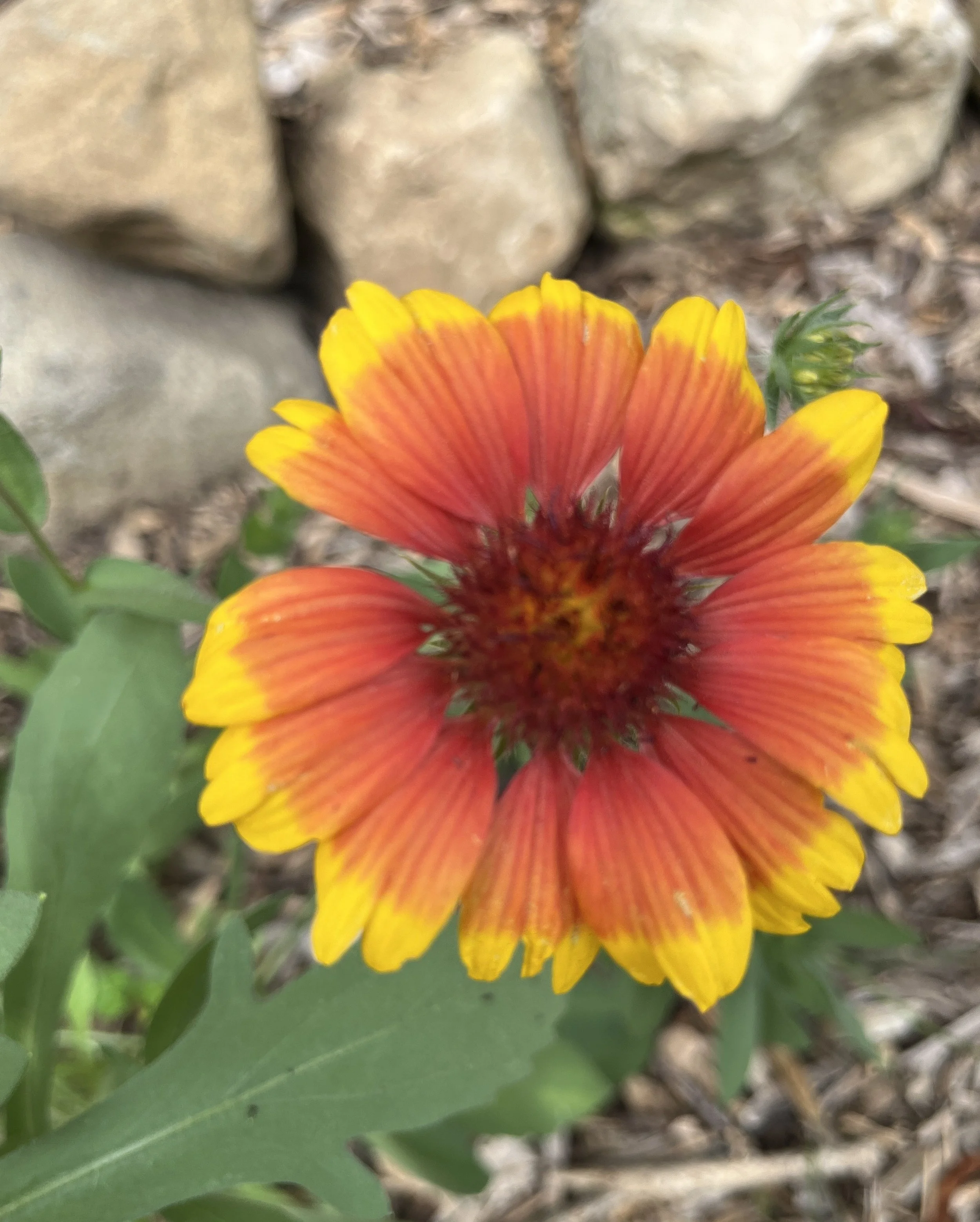
Say “No” to Knotweed
There are three species of knotweed that have invaded Wisconsin and spread across the state at lightning speed. Once thought to be an attractive landscaping plant, they are all regulated plants by the Wisconsin DNR due to their rapid growth and destructive ecological impact.

Serviceberry: A Tree for all Seasons
Serviceberry (Amelanchier spp.) is a native North American woody perennial that can be grown as either a large shrub or a small multi-stem tree. There are about 30 species of Amelanchier, some with very interesting histories.

Soldier Beetles Marching On
Sometimes when an unrecognized insect wanders into the landscape, it is difficult to know if it is a friend or foe. Therefore, it is hard to know how to react. Soldier beetles in general, and the Goldenrod Soldier Beetle, (Chauliognathus pensylvanicus) specifically, are one of the good guys and should be encouraged to stick around.

Preparing for Spring Gardening
Now that fall is on the horizon, it is time for gardeners to kick back, relax and enjoy a well-earned rest. Maybe not just yet. Fall is the best time to evaluate what was the good, bad, and ugly about the current landscape and plan for the spring. Plan a new bed, revitalize an old bed, or prepare the landscape for next spring.

Invasive Plants
Much has been written about invasive plants, but what exactly are they? Just because a plant is aggressive does not mean it is invasive. For instance, that creepy looking, vining wild cucumber, Echinocystis lobata, that winds through plants and trees along the roadsides in late summer is aggressive, but is actually a native plant.

Dragonflies and Damselflies: Nature’s Acrobats
Living as we do in an area of abundant waterways; it is hard to meet a person who has not encountered dragonflies and damselflies. Dragonflies are the more widely recognized of the two, but damselflies play an equally important role in the ecosystem.

Blanket Your Flower Bed with Gaillardia
Gaillardia (Gaillardia spp.), also known as Blanket Flower, is one of the hardiest, longest blooming flowers available to Wisconsinites. With daisy-like flowers in abundant color, they make a great addition to any landscape.


Organic Pest Control
From a horticultural standpoint, a pest is a destructive organism that has a detrimental effect on crops or landscape plants. Pests can include insects, pathogens or weeds. Pesticides include herbicides, insecticides, fungicides, and repellents. Learning how to use these in the least toxic way is good for the environment and good for the humans who deal with them.

Flowering Trees and Bushes
Most people think of flowering trees and bushes as a spring event. While there are many that are reliable spring bloomers, including lilac, magnolia, and crabapples, there are some that come later that can enhance the landscape.

The Tropical Gardens
During Victorian times tropical gardens were very popular. Massive outdoor displays were cultivated during the summer and the plants were then moved into greenhouses or other protected areas during the winter to be saved until the next season. This concept is seeing a resurgence in today’s gardens. If a tropical vacation is not in the budget, bring the tropics to the Midwest by placing just a few tropical plants strategically in borders or as specimen plants. The impact will be impressive.

Snapdragons
Snapdragons (Antirrhinum majus) are a nostalgic, fun flower to have in flower gardens. They are an old-time flower that you may remember in your grandparent’s gardens. Or, you may remember playing with them as children making the “dragon mouth” open and close.

White Daisies
Daisies are the April birth flower, along with sweet peas. Both flowers have traditionally signified innocence, purity, and love. Regardless of the meaning, they are harbingers of spring and a good growing season to come. The two most common white daisies in landscapes are the hybrid Shasta daisies (Leucanthemum × superbum) and Oxeye daisies (Leucanthemum vulgare).

Tree and Shrub Galls
Galls are abnormal growths that occur on twigs, branches, and leaves. Some are small lumps; others are large, more complicated structures. They can be green, plain brown, or brightly colored. Although they look disconcerting, for the most part they are not harmful to the plant.

A Poison Ivy Primer
Poison ivy (Toxicodendron radicans) is the one plant the proves the point that not all native plants are pleasing. It is a perennial, woody plant native to Wisconsin and all of North America. It is quite adaptable, prefers to climb, but will creep along the ground if it cannot find something upon which to climb.

Raised Bed Gardening
There are many reasons to consider raised bed gardening, including poor existing soil, increased accessibility, and stubborn persistent weed control. Regardless of the reason, raised bed gardening is a centuries-old technique that deserves some consideration for not only vegetable gardening, but also flowers and shrubs.

To Plant or Not to Plant?
Anyone who has traveled with children knows it is inevitable that a sweet voice will come from the back seat and ask the question “Are we there yet?” Sometimes repeatedly. Sometimes within a mile of the driveway.

Hellebores, an Early Spring Delight
Hellebores (Heleborous×hybridus) are low maintenance perennials in the buttercup family that offer beautiful spring blooms with handsome evergreen foliage on sturdy plants that never need staking and are seldom bothered by pests or diseases.

Mulch---The Gardener’s Friend
Mulch is one of the most important tools in a gardener’s arsenal. In fact, it can make many of the other tools unnecessary over the course of the growing season.

Spring Ephemerals
The days are getting marked off the calendar and we are moving closer and closer to spring. One sure sign of warmer weather is the emergence of spring ephemerals. In Wisconsin, these plants emerge typically between March and May only to quickly die away. In their short life span, they are an important part of the ecosystem, providing early pollen and fruit for bees and small mammals.